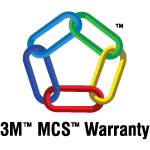Best Practices and Tips
Discover the best practices for fleet graphics removal without damaging your vehicle’s surface. Learn the step-by-step process and essential tips for a clean finish.
Removing fleet graphics can be a daunting task, especially if you’re worried about damaging your vehicle’s surface. Whether you’re updating your branding, replacing old graphics, or returning leased vehicles, proper removal is crucial. In this article, we’ll guide you through the best practices and tips for removing fleet graphics, ensuring a clean and professional finish.
1. Gather the Necessary Tools
Before you start, make sure you have all the necessary tools on hand. The right equipment can make the process smoother and prevent potential damage to your vehicle.
Tools You’ll Need:
- Heat gun or hairdryer
- Plastic scraper or squeegee
- Adhesive remover
- Cleaning cloths
- Mild soap and water
- Gloves
2. Assess the Condition of the Graphics
Examine the condition of the graphics before you begin. Older graphics might be more brittle and harder to remove, while newer ones may come off more easily. Understanding the state of the graphics can help you determine the best approach for removal.
3. Heat the Graphics
Heating the graphics is a crucial step that helps loosen the adhesive, making it easier to peel off the vinyl without tearing it.
Steps:
- Turn on your heat gun or hairdryer to a medium setting.
- Hold the heat source about 6-12 inches away from the graphic.
- Move the heat source in a back-and-forth motion to evenly distribute the heat.
- Heat a small section of the graphic for about 30-60 seconds.
4. Peel Off the Graphics
Once the adhesive is warm and pliable, you can start peeling off the graphics.
Steps:
- Begin at one corner of the graphic.
- Use a plastic scraper or your fingers to lift the edge.
- Slowly peel back the vinyl at a 45-degree angle. Pulling too quickly or at a sharp angle can cause the vinyl to tear.
- Continue heating and peeling in small sections to ensure the adhesive stays pliable.
5. Remove Residual Adhesive
After removing the graphics, you’ll likely find some adhesive residue left on the vehicle’s surface. Removing this residue is essential for a clean finish.
Steps:
- Apply adhesive remover to a clean cloth.
- Gently rub the cloth over the adhesive residue.
- Allow the adhesive remover to sit for a few minutes, softening the residue.
- Use a plastic scraper to carefully lift the softened adhesive.
- Repeat the process until all residue is removed.
6. Clean the Surface
Once all the graphics and adhesive residue are removed, it’s time to clean the surface thoroughly.
Steps:
- Mix mild soap with water to create a cleaning solution.
- Use a clean cloth to wash the area, removing any remaining adhesive remover and dirt.
- Rinse with clean water and dry with a soft cloth.
7. Inspect for Damage
After cleaning, inspect the vehicle’s surface for any signs of damage. While following the proper removal techniques should prevent most issues, it’s important to check for any scratches or discoloration.
8. Professional Removal Services
While DIY removal is possible, sometimes professional help is the best option, especially for large fleets or stubborn graphics. Professionals have specialized tools and experience to ensure a flawless finish without risking damage to your vehicles.
Conclusion
Fleet graphics removal can be a daunting and delicate task, particularly if you’re concerned about damaging your vehicle’s surface. The process involves more than just peeling off vinyl; it requires careful handling to avoid paint damage, scratches, or adhesive residue that can mar the vehicle’s appearance. Whether you’re updating your branding, replacing outdated graphics, or preparing to return leased vehicles, proper removal is essential to maintain your vehicle’s pristine condition.
While it might seem like a task you can handle yourself, the reality is that DIY removal can often lead to costly mistakes. Professional removal services ensure that the job is done efficiently and safely, using specialized tools and techniques that protect your vehicle’s finish. Our experts are trained to assess the condition of the graphics and the underlying surface, apply the correct amount of heat, and use the right tools to gently lift the vinyl without causing damage.
By leaving the removal to professionals, you can avoid the risk of tearing the vinyl, leaving behind stubborn adhesive residue, or even causing paint damage that requires expensive repairs. Professionals not only guarantee a clean and professional finish but also save you time and hassle, allowing you to focus on more critical aspects of your business.
In summary, while the article provides an overview of best practices and tips for removing fleet graphics, the safest and most efficient route is to trust the professionals. Contact us today for expert fleet graphics removal and ensure your vehicles remain in top condition.
FAQs

We proudly use 3MTM graphic films and overlaminates.
